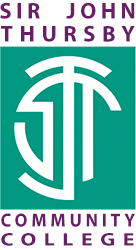Topic 2 Year 9 Computing
| Computing | |||
| Topic | Programming Fundamentals 3 - Python | ||
| No of lessons | 6 | ||
| When is it happening | Year 9 Term 3 | ||
| What will students learn | Students will know how to use a test-based programming language to solve a variety of computational problems by consolidating what they already know and learning new methods for program flow, such as iteration - count controlled loop (For) and conditional loops (While). Students will learn how to store multiple values using a list. Students will also learn on how to make their programs more efficient by using modular programs by using either a procedure or a function. | ||
| Key Knowledge that students should know at the end of 'Topic' | This is the knowledge that students will meet for the first time in this topic | Students can: define iteration, identify two methods of iteration, define count controlled loop and conditional loop, select the correct method of iteration for a problem, define a list, explain why a list is used over a variable, identify the components of a list i.e. name and index, declaring a list, filling a list with data values, define modular programming, explain advantages of using modular programming, define procedure and function, identify the components of a procedure and function i.e. parameter, know when to use a procedure or function. | |
| This is knowledge that students may have met before but will need to deepen their understanding | Students should be able to: identify and describe the key components of the Python IDE i.e. text editor, shell window, run and error handling, recall the first two methods of program flow, which is sequence and selection, know that a variable is used to store data e.g. name, the different data types a variable can be, able to identify and use in a non-programming scenario boolean and logical operators i.e. AND, OR, =, <, > | ||
| Key Skills that students should be able to demonstrate at the end of 'Topic' | This is the skills that students will meet for the first time in this topic | Students can: use a count controlled loop, such as For, and conditional loop, such as While to solve a computational problem, declare, fill and use use a list to solve a computational problem, declare and use a procedure and function to solve a computational problem. | |
| This is skills that students may have met before but will need to develop | Students will be able to do the following to solve a computational problem: use the four key components of the Python IDE i.e. text editor, shell window, run and error handling; program a simple sequence; use a variable with correct data type to store dat | ||
| Key vocabulary that students should know and understand |
Iteration, Repetition, Count Controlled Loop, Conditional Loop, For, While, Range, List, Index, Element, Modular Programming, Procedure, Function, Parameter, Def Programming, IDE, Text Editor, Shell Window, Run and Error Handling, IDLE, Input, Output, Print, Data Type, Integer, Real/Float, String, Instructions, Declare, Variable, Sequence, Selection, =, <, >, AND, OR, Repeat, Multiple, |
||
| The Big Question | How do I program in Python? | ||
|
Key questions that students should be able to answer at the end of the 'Topic' |
How do I use a count controlled loop in Python? | ||
| How do I use a condition controlled loop in Python? | |||
| How do I use a list in Python? | |||
| How do I use modular programming in Python? | |||
